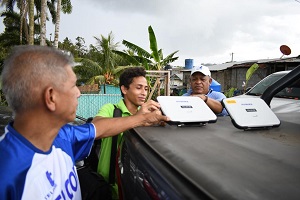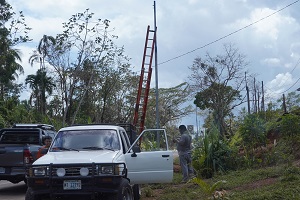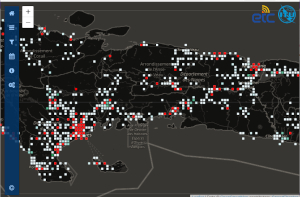Jamaica
In November 2025, in order to support the disaster response after hurricane Melissa, the Telecommunication Development Bureau deployed 17 Iridium satellite phones to Jamaica. The phones are pre-deployed
Jamaica, Grenada, and Saint Vincent and the Grenadines
In July 2024, in order to support the disaster response of hurricane
Beryl, the Telecommunication Development Bureau of ITU deployed 7
Iridium satellite phones to Jamaica; 5 Iridium satellite phones to
Grenada; and 4 Broadband Global Area Network (BGAN) devices and 4
Iridium satellite phones to St. Vincent and the Grenadines.
Hurricane
Beryl was recorded to be the earliest category 5 storm according to the
World Meteorological Organization (WMO), and its passage resulted in
loss of lives and damage to property and infrastructure, including
severe disruptions to communications networks in all of the three
islands. In the aftermath of the disaster, the ITU-led Disaster
Connectivity Map (DCM) was also activated to support responders with
near real-time information on telecommunications connectivity status in Jamaica, Grenada, and Saint Vincent and the Grenadines.
Nicaragua
ITU, through its Emergency Telecommunications Roster, has deployed Broadband Global Area Network (BGAN) terminals and satellite phones to Nicaragua to restore communications connectivity after the country was hit by hurricane Julia in October 2022. During the deployment, ITU trained local teams on using the equipment, brought the units to affected areas, and presented ITU's work on emergency telecommunications such as the development of National Emergency Telecommunication Plans, and early warning systems like cell broadcasting.
Read the ITU News Article ITU Emergency Telecom Roster helps restore connectivity after hurricane hits Nicaragua.

| 
|
Haiti
ITU
provided support to the Government of Haiti after the devastation
caused by a 7.2 magnitude earthquake that struck the county on 14 August
2021, by deploying 20 satellite phones and 10 Broadband Global Area
Network (BGANs) terminals.
This equipment was used by national
humanitarian first responders to help communities that were severely
impacted with recovery and reconstruction efforts. During this
emergency, ITU and the Emergency Telecommunications Cluster (ETC) also
used the ITU-led Disaster Connectivity Map (DCM) to assist in planning for the
response efforts and determine connectivity gaps in the impacted areas.
DCM is a mapping platform to help first responders determine the status
of telecommunications network infrastructure, coverage, and performance
before and after a disaster. Since the earthquake, the DCM mapped over
12,000 connectivity data measurements and compared them to baseline
measurements to find gaps that can be filled with emergency
telecommunications, saving lives and connecting the people affected by
this deadly event.


